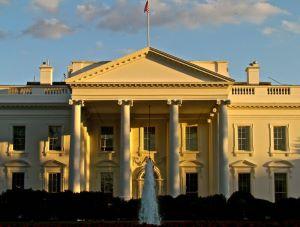The Biden White House sent its first National Drug Control Strategy to Congress on April 21. It breaks positive new ground by explicitly acknowledging harm reduction measures to prevent overdose and blood-borne diseases among drug users. At at the same time, though, it also relies heavily on the destructive and counterproductive pursuit of failed prohibitionist drug policies -- and funds more law enforcement much more heavily than harm reduction.

"The strategy focuses on two critical drivers of the epidemic: untreated addiction and drug trafficking," the White House said. "It instructs federal agencies to prioritize actions that will save lives, get people the care they need, go after drug traffickers' profits, and make better use of data to guide all these efforts. Saving lives is our North Star, and the 2022 National Drug Control Strategy calls for immediate actions that will save lives in the short term and outlines long-term solutions to reduce drug use and its associated harms, including overdose."
While the strategy includes long-familiar categories such as drug treatment, prevention, supply reduction, and criminal justice and public safety, it also emphasizes an evidence-based approach, "building a recovery-ready nation," and for the first time, harm reduction.
"The Biden-Harris Administration's efforts focus on meeting people where they are and building trust and engagement with them to provide care and services," the White House said. "Specifically, the strategy calls for greater access to harm reduction interventions including naloxone, drug test strips, and syringe services programs. It directs federal agencies to integrate harm reduction into the US system of care to save lives and increase access to treatment. It also calls for collaboration on harm reduction between public health and public safety officials, and changes in state laws and policies to support the expansion of harm reduction efforts across the country."
The strategy calls for "the coordinated use of federal grant funds for harm reduction," and the administration last year broke new ground with a $30 million grant program for harm reduction providers. But in a sign of continued reliance on traditional law enforcement priorities, the strategy also envisions a $300 million increase for Customs and Border Patrol and another $300 million increase for the DEA. Those figures were released as part of the White House's FY 2023 budget released last month.
"Responding effectively to the illicit production, trafficking, and distribution methods of domestic criminal organizations and Transnational Criminal Organizations (TCOs) is a significant challenge and remains a Biden-Harris Administration priority," the White House said.
That kind of talk suited mainstream Democrats just fine.
"Illicit drugs cause immeasurable pain and loss in our communities. As the Chairman of the Senate Caucus on International Narcotics Control, I've pressed for an updated federal plan to tackle them," said Sen. Sheldon Whitehouse (D-RI). I've been clear that the plan must include a more coordinated approach to cracking down on drug trafficking and transnational criminal organizations, especially the ways in which they launder and protect their ill-gotten gains using US rule of law and financial networks; and more and better cooperation with our international partners to reduce the supply of precursor chemicals used to manufacture illicit drugs and to levy tougher sanctions against transnational drug syndicates. I'm pleased to see my priorities reflected in this new strategy, and I look forward to working with the Biden administration to deliver on those priorities."
Whitehouse also lauded the strategy's "tearing down barriers to treatment, including expanding access to life-saving naloxone and medication-assisted treatment; improving our data collection systems to better understand the effects of our intervention efforts."
Reform advocates offered praise -- sometimes lukewarm -- for the administration's tentative embrace of harm reduction, but blasted its reliance on tired, failed drug war paradigms.
In its analysis of the strategy, the Washington Office on Latin America (WOLA) called it "a major step forward" and lauded the administration for "focusing on ensuring access to treatment for substance use disorders and highlighting the crucial role of harm reduction services." But WOLA also noted that, "when measured against the scale of the nation's overdose problems and the urgency of the needs, Biden's new plan appears quite timid."
WOLA also warned that the strategy's "positive innovations regarding investment in treatment and harm reduction strategies risk being undermined by a continued commitment to the kinds of policies that have exacerbated the present crisis and that continue to absorb the lion's share of resources, namely, drug criminalization at home and wildly exaggerated expectations for what can be achieved through supply control efforts abroad."
Similarly, the libertarian-leaning Cato Institute called the attention to harm reduction a "positive," but noted steps that it did not take, such as making the opioid overdose reversal drug naloxone available over-the-counter and repealing the so-called Crack House Statute that stands in the way of federal approval of safe injection sites.
"On a negative note," Cato observed, "the remainder of the new report calls for doubling down on interdiction, border control, and other law enforcement measures aimed at curtailing the supply of illicit drugs -- as if repeating the same failed strategies of the past half century, only with more gusto, will somehow work."
So there it is: The Biden administration's first crack at a national drug strategy deserves kudos for its embrace of harm reduction and evidence-based approaches, but beyond that, it is pretty much more of the same old same old.
This work by StoptheDrugWar.org is licensed under Creative Commons Attribution-ShareAlike 4.0 International
Add new comment